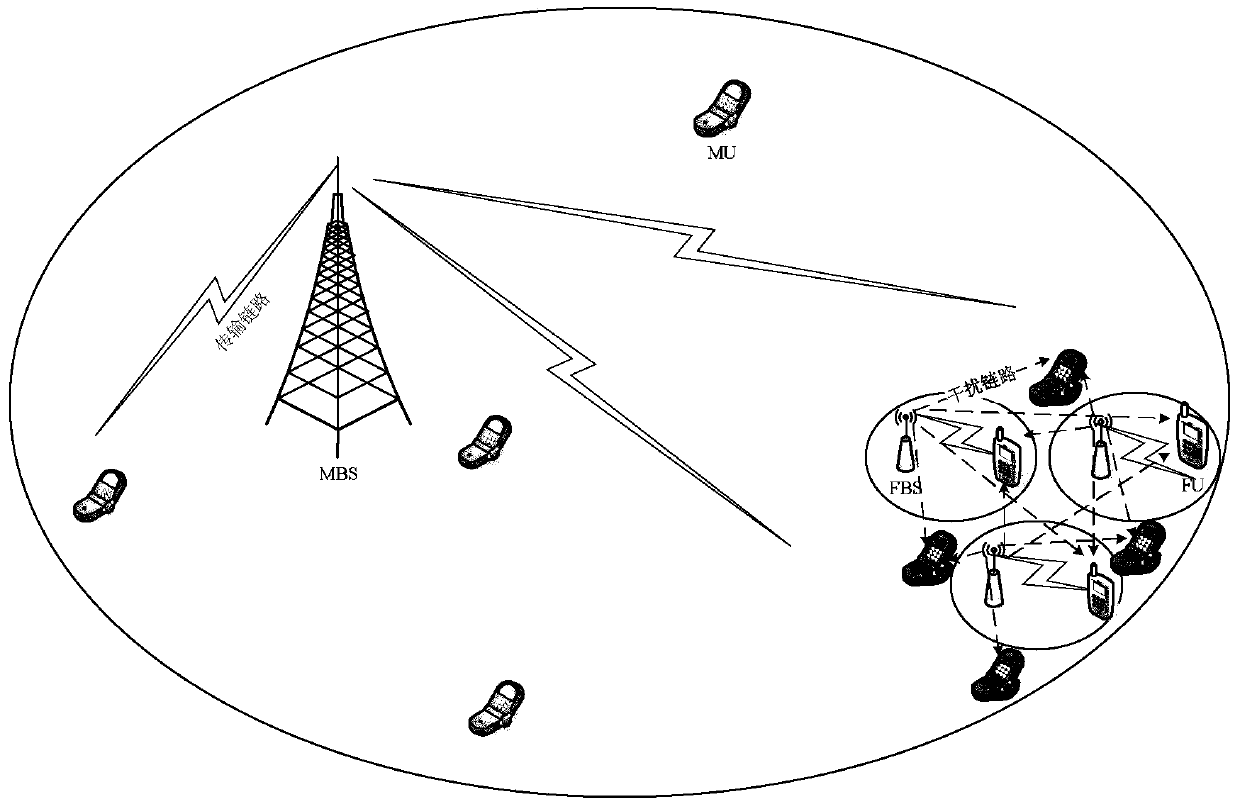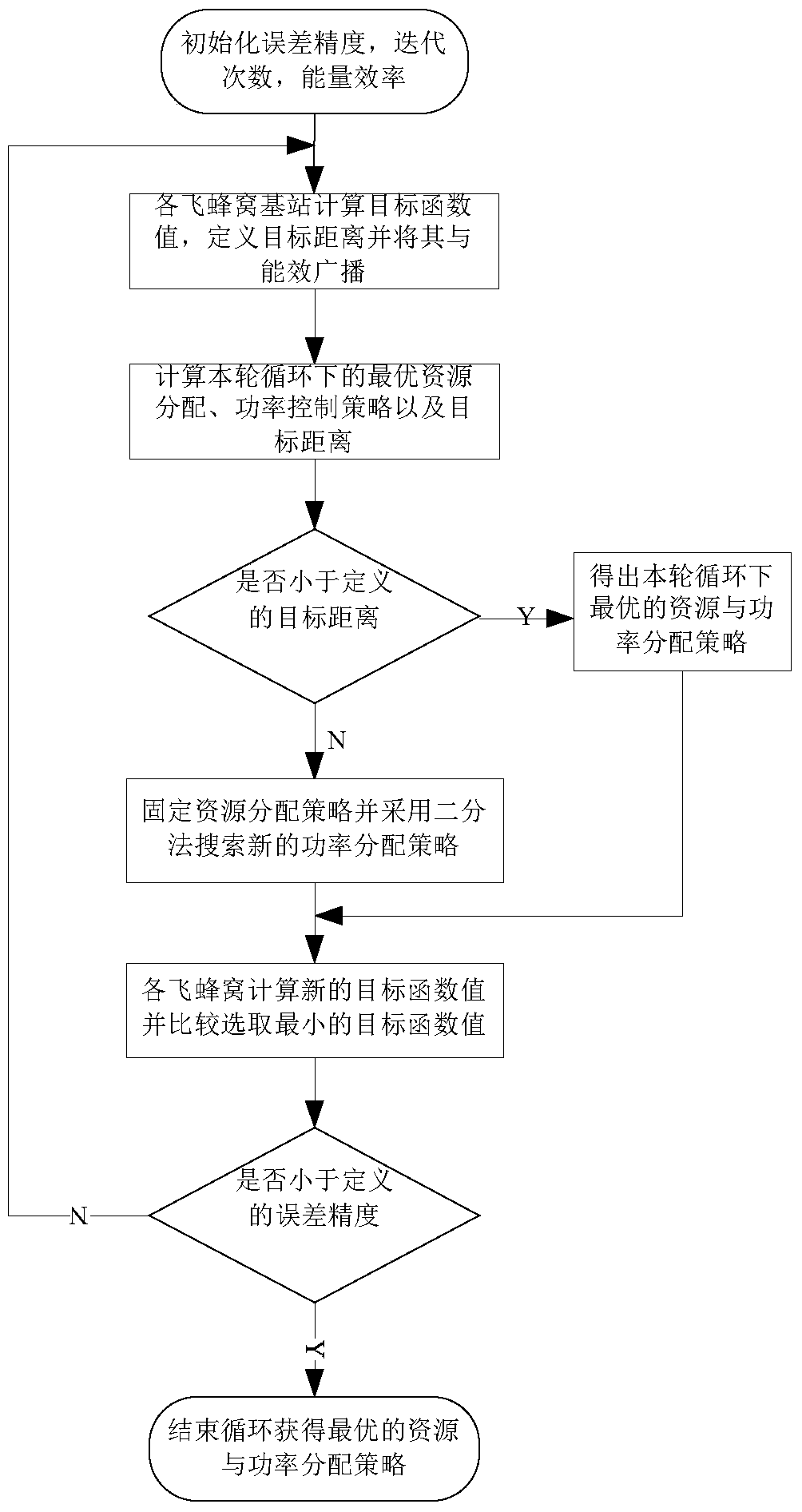A Resource Allocation and Power Control Method Based on Energy Efficiency Fairness in Heterogeneous Networks
A resource allocation and heterogeneous network technology, applied in power management, wireless communication, electrical components, etc., can solve problems such as unbalanced network energy efficiency, low energy efficiency, and affecting the service quality of community users, and achieve the goal of improving minimum energy efficiency and fairness Effect
- Summary
- Abstract
- Description
- Claims
- Application Information
AI Technical Summary
Problems solved by technology
Method used
Image
Examples
Embodiment Construction
[0031] In order to introduce the technical content of the present invention in more detail, specific examples are given and described as follows with accompanying drawings.
[0032] figure 1 The system simulation model of the present invention is established, 3 femtocell networks are densely deployed at the cell edge of the macro cell, and 3 femtocell users are randomly deployed in each femtocell, and some macrocell users are randomly distributed around the femtocell and selected The user with the shortest average distance to the femtocell base station is the user closest to the femtocell network, and it is stipulated that the cross-layer interference of the femtocell network to the macrocell user cannot be higher than a predetermined value. In addition, the coverage radius of the macro cell is 500m, the coverage radius of the femtocell is 20m, the number of resource blocks available in the system is 32, the maximum transmission power of the macro cell base station is 46dBM, a...
PUM
 Login to View More
Login to View More Abstract
Description
Claims
Application Information
 Login to View More
Login to View More - R&D Engineer
- R&D Manager
- IP Professional
- Industry Leading Data Capabilities
- Powerful AI technology
- Patent DNA Extraction
Browse by: Latest US Patents, China's latest patents, Technical Efficacy Thesaurus, Application Domain, Technology Topic, Popular Technical Reports.
© 2024 PatSnap. All rights reserved.Legal|Privacy policy|Modern Slavery Act Transparency Statement|Sitemap|About US| Contact US: help@patsnap.com










